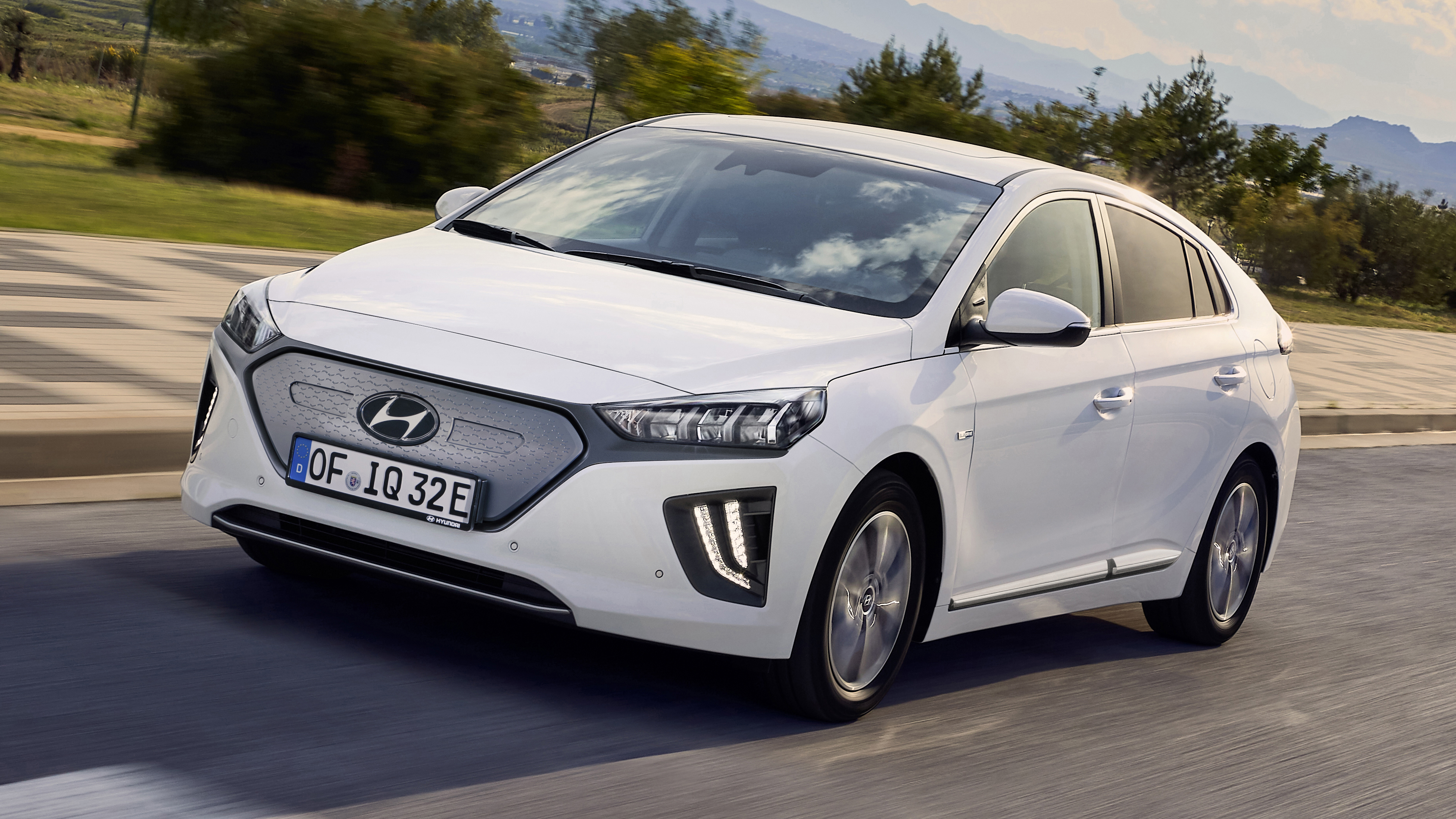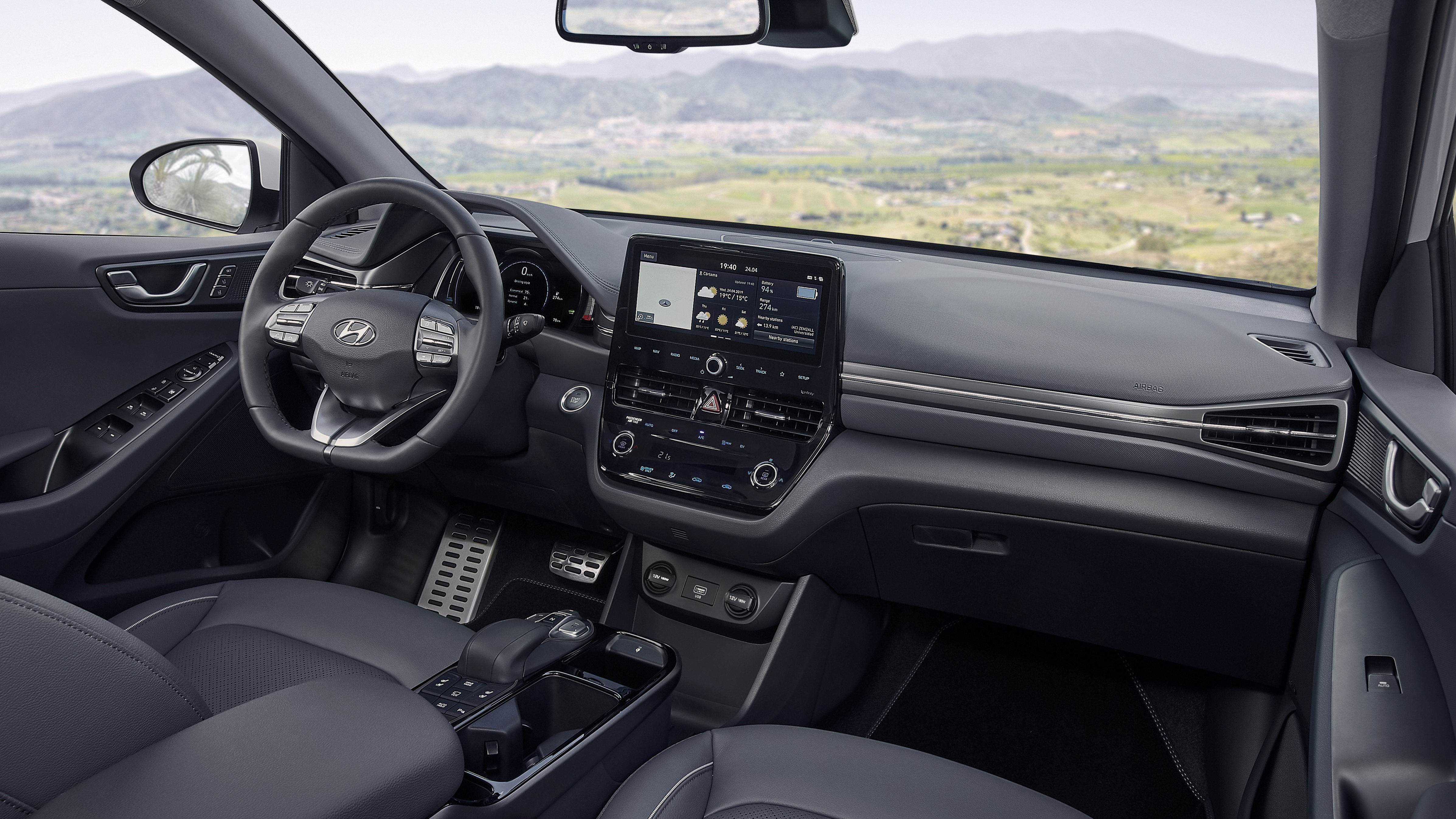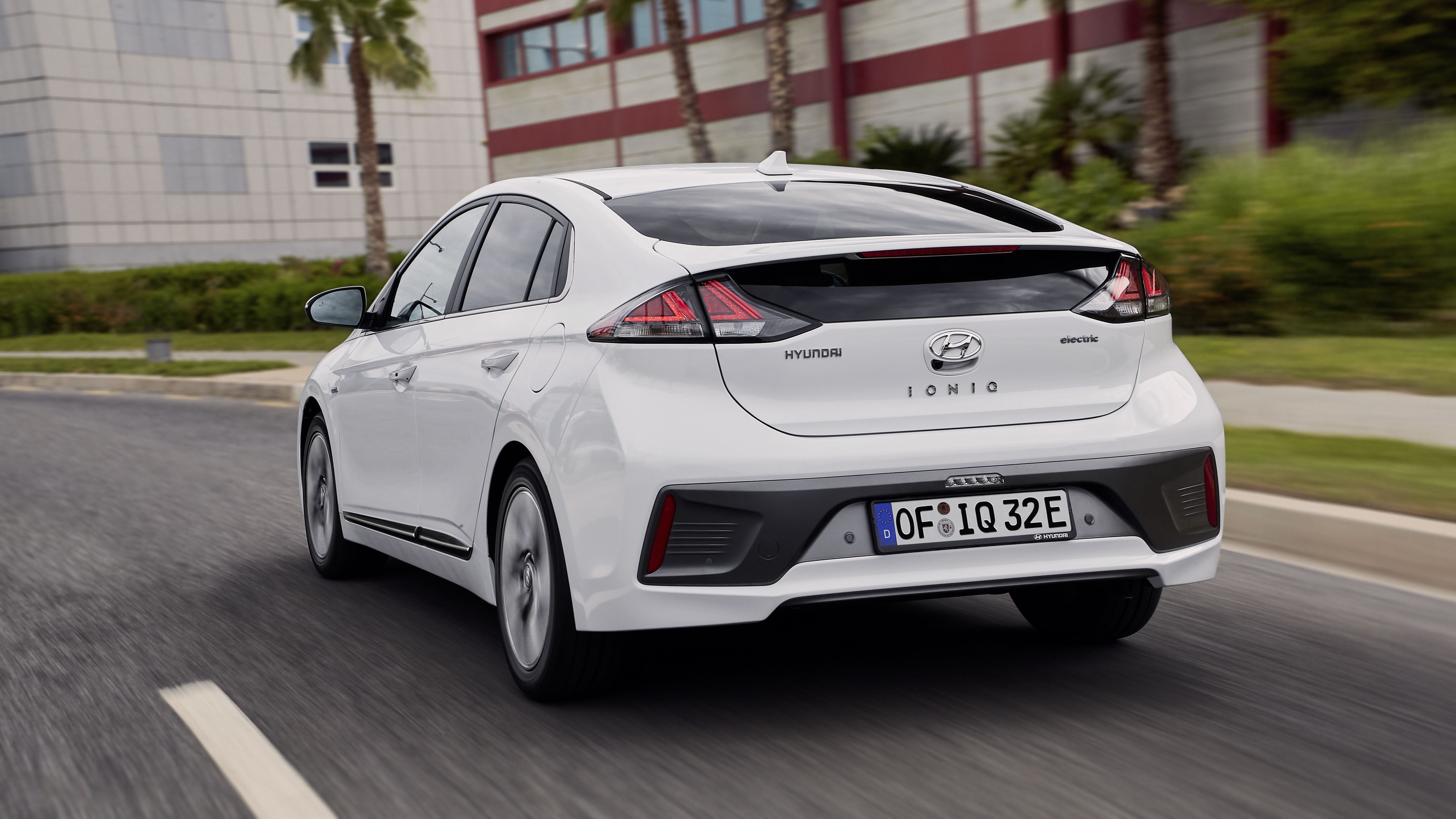
Hyundai Ioniq Electric review
Driving
What is it like to drive?
As well as increased battery capacity there’s now a more powerful motor too, up from 88kW to 100kW, or 134bhp in old money. That’s 15bhp more than the last one, and means the 0-62mph time drops by half a second to 9.7 seconds.
But this isn’t an exhilarating electric car; it doesn’t make the world fizz past like a dual-motor Model 3. Then again it’s not supposed to. It’s best around town, using the wattage for quick bursts in and out of traffic. It’ll whisk you up to speed breezily enough, but tails off where combustion cars – or more expensive electrics – would still be blurring down the road. All the better for saving energy though.
A new feature is fully adjustable, driver-controlled regenerative braking. Basically you can vary the amount of regen with the wheel-mounted paddles. Set to the strongest of the three modes, you’ll barely touch the brakes, effectively giving you one-pedal driving, and putting the stopping energy to good use, back in the battery. Hold the left paddle and you can even bring the car to a complete stop without using the brake pedal. Good to have it there for emergencies though…
Both models comes on 16-inch alloys (the biggest ones available). That means there’s plenty of sidewall squidge to help smooth out the ride. Another reason to take it easy – go too fast and it starts getting a little bobbly. Somehow the centre of gravity doesn’t feel as low as in other pure electric cars, despite all those battery cells wedged under the floor.
Featured

Trending this week
- Car Review
BMW 1 Series
- Top Gear's Top 9
Nine dreadful bits of 'homeware' made by carmakers






